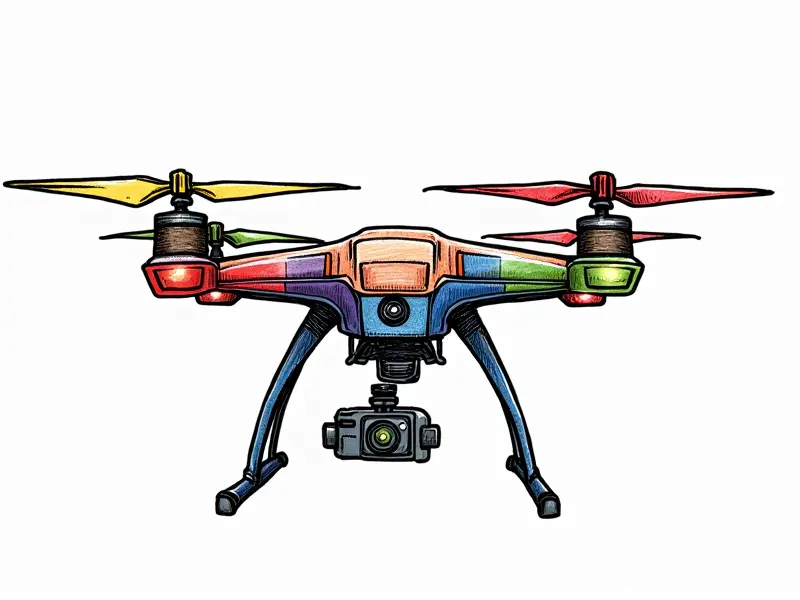Can I fly indoors safely?

Flying remote-controlled (RC) drones indoors presents a unique set of challenges and opportunities for enthusiasts. Whether you're an FPV racing drone pilot, an RC helicopter enthusiast, or someone who enjoys flying RC airplanes, indoor flight requires careful planning and adherence to safety guidelines. This article explores the nuances of safe indoor flying with various types of RC aircraft.
Indoor Flying Tips for RC Drones
Flying indoors demands a different approach compared to outdoor flights due to limited space and potential hazards. Here are some essential tips:
- Choose the Right Drone: Opt for drones with smaller propellers or those designed specifically for indoor use, such as micro quadcopters.
- Lights and Visibility: Ensure your drone is equipped with visible LED lights to help you track its position in low-light conditions.
- Battery Management: Keep an eye on battery levels; indoor flights tend to drain batteries faster due to constant hovering or maneuvering.
Safe Indoor Flight with FPV Racing Drones
FPV racing drones are designed for high-speed, agile flight. Flying them indoors requires extra caution:
- Flight Area Setup: Clear a large room or hall free of obstacles to prevent crashes.
- Camera and Monitor: Use a reliable FPV camera system with low latency for smooth video transmission.
- Safety Gear: Wear protective gear like goggles, helmets, and gloves to safeguard against potential collisions.
Navigate Indoors: RC Drone Safety Guide
Moving around indoors requires precise navigation. Here’s how to stay safe:
- Flight Paths: Plan your flight paths in advance, taking note of any potential obstacles.
- Sensors and Cameras: Utilize onboard sensors like ultrasonic or infrared for obstacle avoidance.
- Manual Control: Practice manual control to handle unexpected situations effectively.
Mastering Indoor Flights with RC Helicopters
Flying an RC helicopter indoors is a challenging yet rewarding experience. Follow these tips:
- Heli Design: Opt for coaxial or multi-rotor helicopters to minimize the risk of tipping over.
- Practice Hovering: Spend time mastering hovering techniques before attempting more complex maneuvers.
- Lightweight Construction: Choose lightweight materials that reduce impact damage in case of collisions.
Avoiding Obstacles in Indoor Drone Flight
Indoor environments are filled with obstacles. Here’s how to navigate them safely:
- Sensor Integration: Integrate sensors like ultrasonic or LiDAR for real-time obstacle detection.
- Motion Planning Algorithms: Use advanced motion planning algorithms to calculate optimal flight paths around obstacles.
- Manual Override: Always have the option to manually override automated systems in critical situations.
Best Practices for Indoor RC Airplane Flying
Flying RC airplanes indoors demands a different set of skills and precautions:
- Aircraft Design: Choose planes with smaller wingspans and lightweight materials to maneuver easily in confined spaces.
- Battery Efficiency: Opt for high-capacity batteries that provide longer flight times without compromising performance.
- Flight Surface Preparation: Ensure the flying area is smooth and free of debris to prevent damage during takeoff or landing.
Top Indoor Flying Techniques for RC Planes
Mastery of indoor flying techniques can enhance your enjoyment and skill level:
- Aerobatic Maneuvers: Practice basic aerobatics like loops, rolls, and spins to improve control.
- Stall Recovery: Learn how to recover from stalls in tight spaces to avoid collisions.
- Throttle Management: Master throttle management to maintain stability during complex maneuvers.
Safe Indoor Flying Techniques for RC Planes
Safety is paramount when flying indoor RC planes. Here’s what you need to know:
- Fall Protection: Use a landing pad or soft surface to minimize damage in case of falls.
- Flight Line Management: Keep all cables and wires organized to prevent tripping hazards.
- Emergency Procedures: Develop emergency procedures for unexpected situations like power loss or system failure.
FPV Racing Drones: Indoor Flying Essentials
Flying FPV racing drones indoors requires specialized equipment and techniques:
- High-Frame Rate Cameras: Use high-frame rate cameras to capture smooth, clear video feeds.
- Battery Packs: Carry multiple battery packs for continuous flight time without interruptions.
- Flight Planning Tools: Utilize software tools to plan and simulate indoor flight paths before actual flights.
Navigating Indoors with Your RC Quadcopter
Flying an RC quadcopter indoors involves mastering several key skills:
- Propeller Guards: Install propeller guards to prevent damage and injury from collisions.
- Flight Stability: Focus on achieving optimal flight stability through proper calibration of the drone’s sensors.
- Flying Techniques: Practice flying techniques that enhance maneuverability in tight spaces, such as hovering and precision landing.
Setting Up a Secure Indoor Flying Area
To ensure safe indoor flying, follow these steps to set up your flying area:
- Cordon Off the Space: Use barriers or tape to mark out a designated flight zone.
- Remove Obstacles: Clear any furniture, decorations, or other objects that could interfere with your drone’s flight path.
- Lights and Visibility: Ensure the area is well-lit for clear visibility of your drone during flights.
Conclusion
Flying RC drones indoors can be a thrilling experience, but it requires careful planning and adherence to safety guidelines. By following the tips and techniques outlined in this article, you can enjoy safe and enjoyable indoor flying sessions with various types of RC aircraft. Whether you’re an FPV racing drone pilot or someone who prefers more traditional flight styles, mastering indoor flying will enhance your skills and provide endless entertainment.

